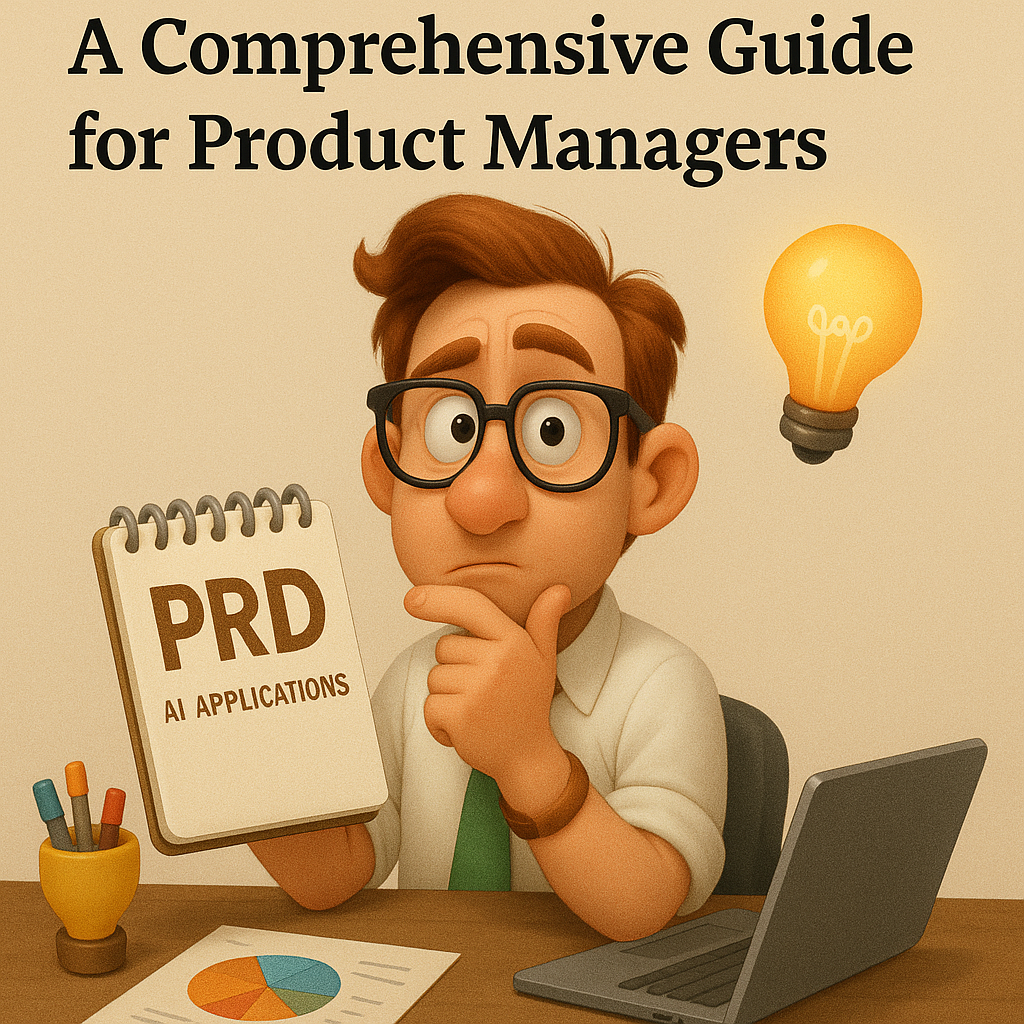The Art of the PRD in AI Applications: A Comprehensive Guide for Product Managers
Jun 12, 2025

The Art of the PRD in AI Applications: A Comprehensive Guide for Product Managers
Introduction
In the rapidly evolving field of artificial intelligence, the importance of a well-crafted Product Requirements Document (PRD) cannot be overstated. As a bridge between the visionary and the practical, a PRD translates high-level business and user needs into detailed, actionable requirements that guide the development team. This guide will walk you through the essential elements of creating effective PRDs specifically tailored for AI applications.
Understanding the Role of a PRD in AI Development
A Product Requirements Document serves several critical functions in AI product development:
-
Communication Tool: It aligns all stakeholders, including developers, designers, project managers, and marketing teams, around a shared understanding of the product.
-
Blueprint: It guides the development process, detailing what needs to be built and how it should perform.
-
Reference Point: It helps to assess project progress and manage scope changes effectively.
Actionable Insight: Always tailor the PRD to address the unique challenges and opportunities presented by AI technologies.
Key Components of an AI-Focused PRD
1. Executive Summary
- Include a brief overview of the AI product’s purpose, its target market, and key objectives.
2. Background and Strategic Fit
- Detail the market research, existing problems, and how your AI solution fits into the broader company strategy.
3. User Stories and Personas
-
Describe typical user personas.
-
List user stories explaining the interactions with the AI system and expected outcomes.
4. Functional Requirements
-
Specify the AI capabilities such as machine learning, natural language processing, etc.
-
Include requirements for training data, models, algorithms, and performance metrics.
5. Non-functional Requirements
-
Address scalability, reliability, and security specifics.
-
Detail compliance with data protection regulations (e.g., GDPR).
6. User Interface/Experience
-
Provide mockups or sketches of the user interface.
-
Outline user experience flows and how AI integrates into these.
7. Quality Assurance
-
Define quality metrics and benchmarks.
-
Outline the testing strategies for AI functionalities.
8. Dependencies
- List internal and external dependencies, including third-party services and data sources.
9. Timeline and Milestones
- Provide a phased timeline with key milestones and deliverables.
10. Risks and Mitigation Strategies
-
Identify potential risks in the development of AI applications.
-
Suggest mitigation strategies for each identified risk.
Best Practices for Writing an AI PRD
-
User-centered Design: Focus on user needs and how the AI will enhance the user experience.
-
Clarity and Precision: Be clear and precise in requirements to avoid ambiguities that could derail development.
-
Iterative Updates: AI projects often require adjustments; keep the PRD dynamic and update it as the project evolves.
-
Collaboration: Engage with all stakeholders, including AI experts, during the drafting to gather diverse insights.
Actionable Insight: Use clear, non-technical language as much as possible to ensure the PRD is accessible to all stakeholders, not just developers.
Conclusion
Crafting a PRD for an AI application involves a deep understanding of both the technology and the user. It requires precision, foresight, and a strong strategic vision. By adhering to the guidelines and best practices outlined above, product managers can ensure their AI projects are not only feasible but poised for success. Remember, a well-planned PRD is your roadmap from vision to reality in the complex landscape of AI development.